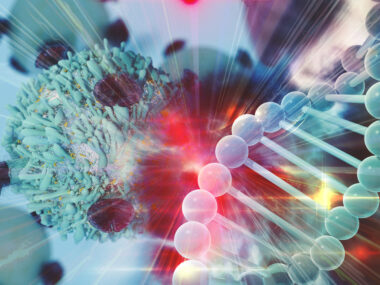Study: Drinking Acidified Water May Help Patients With Infantile Batten
In mouse model of CLN1, acidified water prevented motor impairment
Written by |

Drinking acidified water prevented motor impairment and decreased the toxic accumulation of molecular debris in brain cells in a mouse model of CLN1 disease, also called infantile Batten disease, a recent study reports.
“In this study, we demonstrated that acidified drinking water had beneficial effects in … a mouse model of the fatal childhood neurodegenerative disorder, infantile CLN1 disease. … Our results suggest that consumption of low-pH, acidic drinks may provide therapeutic benefits for patients with CLN1 disease,” the researchers wrote.
“The simplest home-made acidic drinks are lemonade and tea with lemon juice. Commercially available acidic drinks include most flavored waters, fruit juices, fruit drinks, sport drinks like Gatorade and PowerAde, bottled teas and iced teas,” the team noted.
The study, “Acidified drinking water attenuates motor deficits and brain pathology in a mouse model of a childhood neurodegenerative disorder,” was published in Scientific Reports. The work was funded by Sanford Health, a rural health system in the U.S.
Acidified water used in mouse models
Mouse models are a crucial tool in biomedical research for investigating, among other things, potential therapies — including those for Batten disease. Also known as neuronal ceroid lipofuscinosis (NCL), Batten disease refers to a group of rare inherited neurological conditions that result in progressive motor and cognitive decline, vision loss, and seizures. There are five types of Batten, most of which, including infantile Batten or CLN1, are diagnosed in childhood.
In research facilities housing mice, the animals often are given drinking water that is somewhat acidic — with a pH between 2.5 and 3. The water is a bit more acidic than orange juice but less than lemon juice. This is usually done to help keep the water free of bacterial contaminants, and it is assumed to have no effect on the mice.
In a 2019 study, a team led by scientists at Sanford demonstrated that acidic drinking water led to less severe motor impairment for mice in a model of CLN3 disease, also called juvenile Batten disease. Now, a team including some of the same researchers tested the effects of acidified drinking water in Cln1R151X mice, a model of CLN1 disease.
On the vertical pole test, a measure of motor function in which the mice have to climb down a pole, Cln1R151X mice on non-acidified water showed marked impairments compared with wild-type mice at both 3 and 6 months of age. However, Cln1R151X mice given acidified water performed similarly to wild-type mice at both time points.
On a test of coordination and balance called the rotarod test, Cln1R151X mice showed pronounced deficits, and acidified water had no apparent effect. The researchers did note, however, an unusual behavior seen in aged Cln1R151X mice on acidic water.
“In an accelerating rotarod test, Cln1R151X mice receiving acidified drinking water performed poorly, and displayed a strange, rotarod-specific behavior at 6 months of age: they did not want to stay on the still rod, making it difficult to start and carry out the test,” the researchers wrote.
“Only 6-month-old Cln1R151X mice on acidified drinking water displayed this behavior,” the team added, noting that these mice’s behavior otherwise appeared generally normal.
All forms of Batten disease are caused by the dysfunction of cellular “recycling centers” called lysosomes, which leads to a toxic buildup of molecular material. Analyses of the mice’s brains showed that Cln1R151X mice on acidified drinking water had less accumulation of lysosomal material in all brain regions than their counterparts given non-acidic water.
Mice given the water also showed less activation both of astrocytes, star-shaped cells that support neuronal function, and microglia, the main infection-fighting immune cells in the brain. However, the decreases in astrocyte and microglia activation were seen only in certain brain regions.
“Acidified water received from 21 days of age decreased the amount of lysosomal storage material in every brain region examined, reduced astrocytosis in the striatum and somatosensory barrelfield cortex, attenuated microglial activation in the thalamus, and preserved the ability of Cln1R151X mice to climb down a vertical pole as quickly and proficiently as wild-type mice,” the scientists concluded.
The team noted that, while acidified water had a marked effect in this CLN1 model and also the previous CLN3 model, there was little overlap in the specific effects seen in the two models.
“These results indicate that the effects of acidified drinking water are disease-specific,” the scientists wrote.
Through analyses of fecal pellets, the researchers also examined the composition of gut bacteria in the mice. There were several alterations in gut microbiota for Cln1R151X mice given acidic water, the team noted. The scientists speculated that these changes in gut bacteria could in part explain a biological mechanism for the effects of acidified drinking water in the mice.
Beyond the specific effects of acidic water in Batten disease, which will require further testing to validate, this study “verifies that acidified drinking water, which is widely used in laboratory animal facilities, can modify disease phenotypes [traits] in mouse models, contributing to the inter-laboratory variations in neurological and pathological findings,” the researchers concluded.






